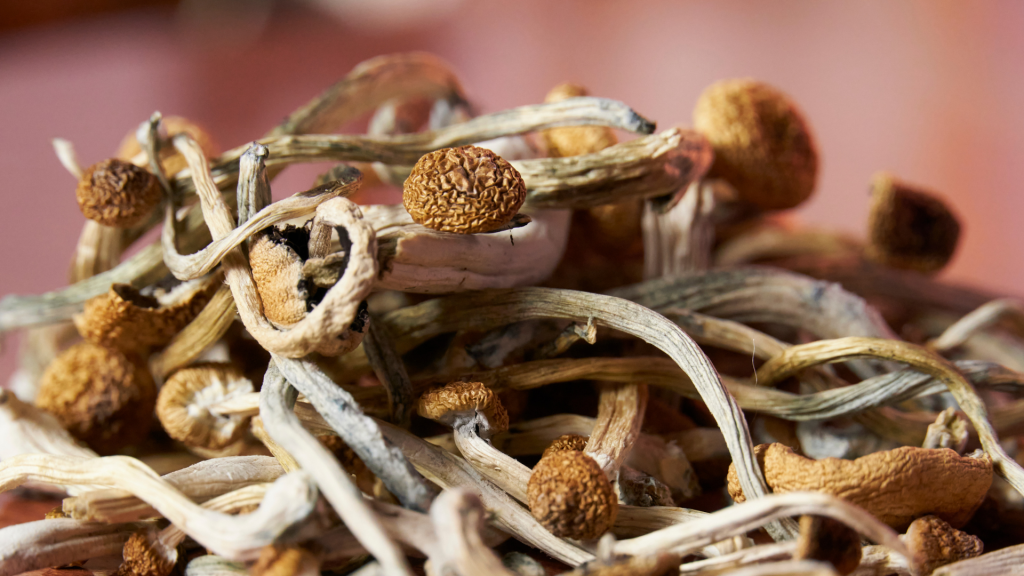Magic mushrooms are more than 90% water. That means in their fresh form, they spoil quickly, lose potency, and are hard to store. For anyone who wants to keep shrooms beyond a day or two, drying is the solution. Drying mushrooms preserves them, makes them easier to dose, and ensures that potency remains stable for months or longer. It’s one of the most important steps after harvesting or buying magic mushrooms.
This guide will explain in detail why drying matters, the different methods available, how to check for proper dryness, and the best ways to store dried mushrooms for maximum shelf life. It also points out common mistakes that can ruin a batch and explains how long dried mushrooms really last.
Why Drying Matters
Drying mushrooms does more than make them lighter and smaller. It locks in their chemical profile and prevents spoilage. Here’s why the drying process is so important:
- Prevents mold and rot: Fresh mushrooms left at room temperature will start to develop bacterial growth within days. The high water content is the perfect environment for mold. Drying removes the water and prevents contamination.
- Preserves potency: Psilocybin and psilocin are sensitive compounds. Heat, light, and oxygen can break them down. Drying mushrooms in the right way reduces exposure and slows degradation.
- Makes dosing accurate: With fresh mushrooms, water weight varies from one specimen to another. Dried mushrooms are stable and predictable. A gram of dried mushrooms is always a gram, making safe and repeatable dosing possible.
- Increases storage time: Fresh shrooms may last a few days in the fridge. Dried mushrooms stored well can last many months, sometimes over a year.
Without drying, shrooms are temporary and unreliable. With drying, they become something that can be used with intention and stored for later without worry.
Methods of Drying
There are several methods for drying mushrooms, each with advantages and drawbacks. The right choice depends on what equipment you have, how humid your environment is, and how much time you want to spend. Let’s look at them one by one.
1. Air Drying (Room Temperature)
Air drying is the oldest and simplest method. You spread mushrooms out in a single layer on paper, cardboard, or a mesh rack. Good airflow is essential. Avoid direct sunlight, because UV light breaks down psilocybin. Mushrooms are flipped daily to ensure even drying.
- Time required: 1–3 days, depending on humidity and mushroom size.
- Pros: Free, easy, no special tools.
- Cons: Slow, and in very humid climates, mushrooms may never get completely dry.
Air drying works best in dry climates or when paired with a fan to increase airflow. It’s simple, but patience is needed.
2. Food Dehydrator (Recommended)
A food dehydrator is the most reliable way to dry mushrooms. Place mushrooms in a single layer on trays, leaving space for air to circulate. Use the lowest heat setting, ideally between 95–115 °F (35–45 °C). Higher temperatures risk damaging psilocybin, so low and slow is the rule.
- Time required: 4–12 hours, depending on mushroom thickness.
- Pros: Fast, thorough, consistent results.
- Cons: Requires buying a dehydrator, which may cost extra.
The dehydrator method produces “cracker dry” mushrooms every time and is considered the gold standard.
3. Desiccant Method
Desiccants, like silica gel packs, can be used to pull moisture out of mushrooms. First, mushrooms need to be partially air-dried, since desiccants can’t handle full water content. Place mushrooms in an airtight container above a layer of silica gel (not touching the mushrooms directly). Over time, the desiccant removes the remaining moisture.
- Time required: 1–2 days after pre-drying.
- Pros: Works well in humid climates, helps finish drying.
- Cons: Slower, and requires extra steps.
This is best as a finishing technique rather than the main drying method.
4. Oven Drying (Use with Caution)
An oven can be used if no other method is available. Set the oven to its lowest temperature, ideally below 122 °F (50 °C). Place mushrooms on a rack with the oven door slightly open for airflow. Watch carefully, if the oven gets too hot, psilocybin can degrade quickly.
- Time required: 2–6 hours.
- Pros: Ovens are widely available.
- Cons: Easy to overheat and reduce potency.
This method works, but it’s risky. It should be used as a last resort.
How to Know Mushrooms Are Fully Dry
The “cracker dry” test is the standard. Properly dried mushrooms will:
- Snap cleanly when bent, like a cracker.
- Be very light and brittle.
- Show no soft or spongy areas.
If any part bends instead of snapping, the mushroom is not completely dry. Incomplete drying means mold can grow during storage, so it’s better to keep drying until everything is crisp.
Storage After Drying
Drying is only half the process. Storing mushrooms correctly keeps them potent and safe.
- Use airtight containers: Glass jars with rubber seals, vacuum-sealed bags, or tins work well.
- Add desiccant packs: These remove any leftover moisture.
- Keep cool and dark: Store in a cupboard, drawer, or box away from sunlight and heat.
- Avoid fridges and freezers: For dried mushrooms, these places introduce condensation and moisture.
Handled properly, dried mushrooms can last 6–12 months without losing much potency. Some people report that they last even longer if vacuum sealed and stored perfectly.
Common Mistakes
Drying mushrooms might sound simple, but mistakes are common:
- Using too much heat: Speeds up drying but destroys psilocybin.
- Incomplete drying: Leads to mold and spoilage in storage.
- Leaving mushrooms in light: UV rays slowly break down active compounds.
- Poor storage: Plastic bags let in air and moisture.
Avoiding these mistakes means your dried mushrooms will be both safe and effective.
How Long Do Dried Mushrooms Last?
Properly dried and stored mushrooms can last for months, sometimes over a year. Potency may decline gradually, but mushrooms don’t suddenly go bad if kept in the right conditions. If they are exposed to moisture, light, or air for long periods, potency loss speeds up. In extreme cases, mold can develop, making them unsafe.
Final Thoughts
Drying mushrooms is essential for preserving them. Whether you use simple air drying, a food dehydrator, or desiccants, the goal is the same: to achieve mushrooms that are completely dry, safe to store, and long-lasting. Once cracker dry, keep them sealed, dark, and cool. Done right, your dried mushrooms will stay stable and ready whenever you need them.
The process may take patience, but the reward is worth it. Dried mushrooms are easier to handle, easier to dose, and far more reliable than fresh ones. It’s the step that transforms a short-lived harvest into something that can be used with intention for months to come.
References
- Leafly – How to safely dry and store psychedelic mushrooms
- Tripsitter – How to dry magic mushrooms (incl. silica gel finish)
- ShroomOK – How to dry and store Psilocybe mushrooms

